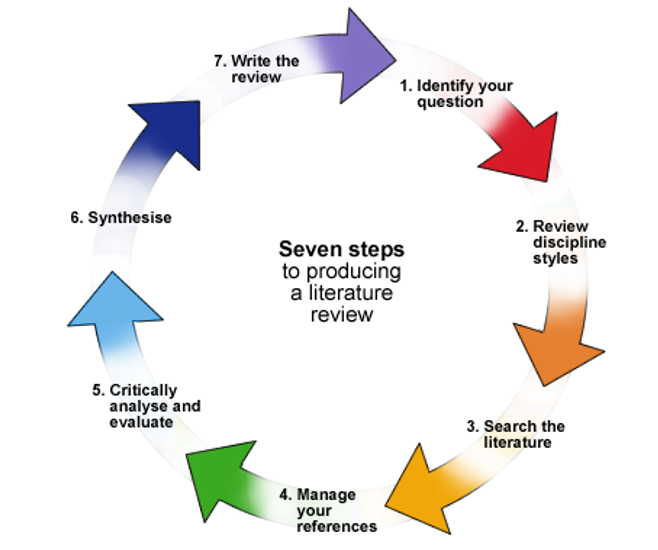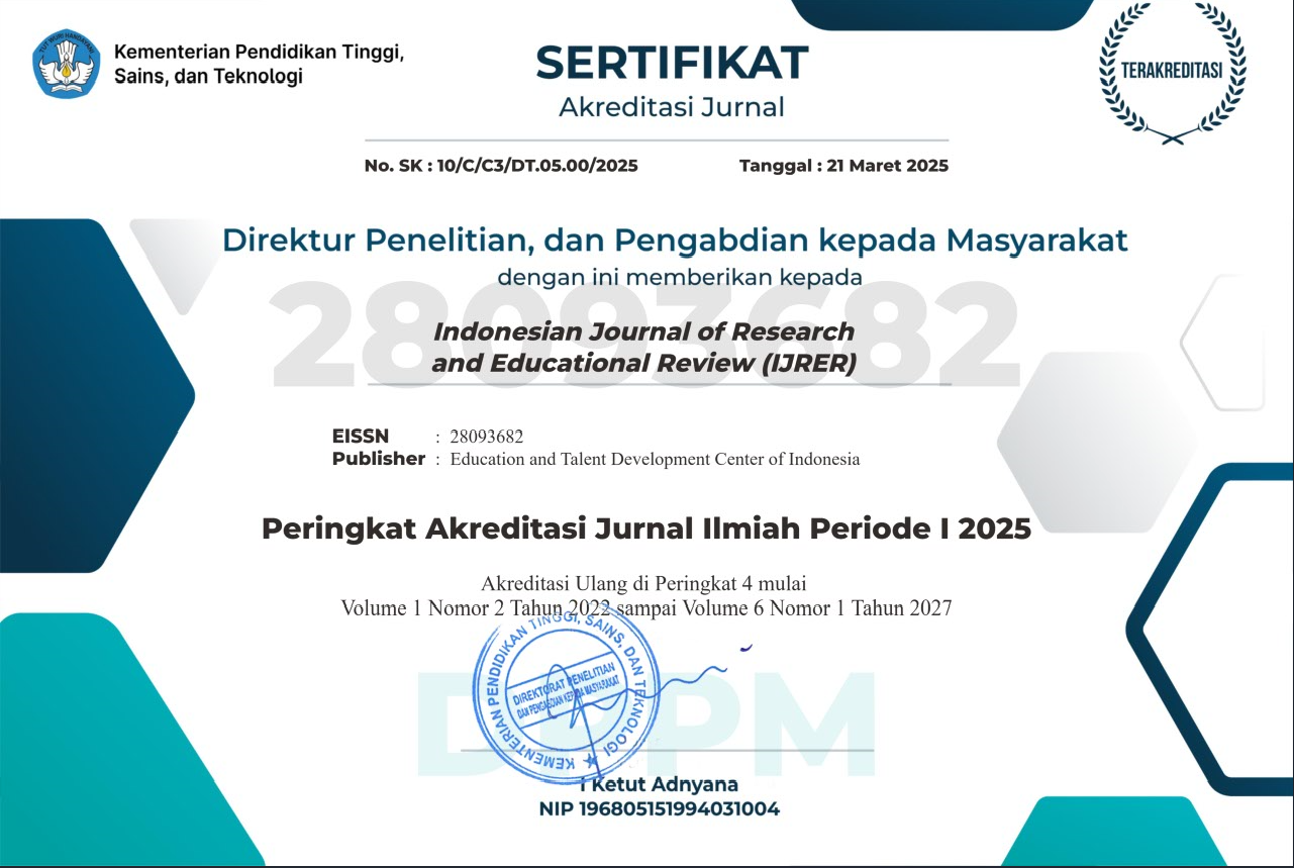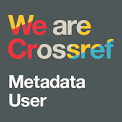The Impact of Islamic Education on Social Media on the Beliefs of the Muslim Community
DOI:
https://doi.org/10.51574/ijrer.v4i4.3723Keywords:
Belief, Da'wah Education, Islamic Education, Literature Review, Social MediaAbstract
Social media serves as an alternative medium for disseminating da'wah messages, prompting many da'wah practitioners to utilize it as a platform. The complexity of media requires da'i to engage with it, particularly social media, which serves as an efficient medium for da'wah communication in contemporary society. This literature review seeks to assess the efficacy of da'wah messages disseminated through social media based on the beliefs of the Muslim population. A broad examination of the efficacy of da'wah media is necessary due to the rapid evolution and utilization of media. This study uses a literature review methodology, collecting various sources from journals, articles, and books related to the research variables. The literature review is analyzed based on the specifications of the last 10 years, between 2015 and 2025. The findings of this literature review indicate that the efficacy of social media da'wah depends on the frequency and intensity of one's engagement with the media, after which the message conveyed is relevant to the da'wah discourse.
References
AL-Zoubi, A. (2024). Digital Technology and Changes in Media Consumption: A Case Study of Smartphone and App Usage. In International Conference on Business and Technology (pp. 433–444). Springer. https://doi.org/10.1007/978-3-031-54019-6_39
Ali, B. (2023). The Faces Of Islam (International Conference Of BKMT And As-Syafiiyah Islamic University. 1(1), 494–513.
Ansari, A. (2024). Islam Nusantara: Keanekaragaman Budaya Dan Tradisi. LISAN AL-HAL: Jurnal Pengembangan Pemikiran Dan Kebudayaan, 18(2), 226–247. https://doi.org/10.35316/lisanalhal.v18i2.226-247
Anthony, F.-V., & Lourdunathan, A. C. (2025). Public Religious Pedagogy Amidst Religious Pluralism: Qualitative Study Among Hindu and Muslim Educators in Salesian Institutions of Tamil Nadu, India. Religions, 16(5), 646. https://doi.org/10.3390/rel16050646
Aslinda, A., Elhusen, S. K., Ahmad Lahmi, Asmaret, D., & Dahlan, D. (2024). Islam Indonesia: Telaah Kontruksi Identitas Muslim Tradisional dan Muslim Modernis. Progressive of Cognitive and Ability, 3(3), 219–229. https://doi.org/10.56855/jpr.v3i3.1150
Crunch, T. (2020). Answers to your burning questions about how ‘Sign in with Apple’works. Retrieved from the Internet At.
Dubard Barbosa, S., & Smith, B. R. (2024). Specifying the role of religion in entrepreneurial action: a cognitive perspective. Small Business Economics, 62(4), 1315–1336. https://doi.org/10.1007/s11187-023-00839-2
El-Menouar, Y. (2014). The five dimensions of Muslim religiosity. Results of an empirical study. Methods, Data, Analyses, 8(1), 26. https://doi.org/10.12758/mda.2014.003
Firdaus, Y., Azizurrochman, M. N., & Siswanto, A. H. (2025). Dakwah Digital: Optimalisasi Media Sosial Sebagai Sarana Transformasi Sosial Islam. Menulis: Jurnal Penelitian Nusantara, 1, 746–755. https://doi.org/10.59435/menulis.v1i6.426
Garlinska, M., Osial, M., Proniewska, K., & Pregowska, A. (2023). The Influence of Emerging Technologies on Distance Education. Electronics, 12(7), 1550. https://doi.org/10.3390/electronics12071550
Gentles, S. J., Charles, C., Nicholas, D. B., Ploeg, J., & McKibbon, K. A. (2016). Reviewing the research methods literature: Principles and strategies illustrated by a systematic overview of sampling in qualitative research. Systematic Reviews, 5(1), 1–11. https://doi.org/10.1186/s13643-016-0343-0
Gusti, R., Mishbahuddin, A., & Palenti, C. D. (2025). Peran Dakwah Dalam Membangun Moralitas Generasi Milenial. Jurnal Khabar: Komunikasi Dan Penyiaran Islam, 7(1), 1–15.
Haddock, A., Ward, N., Yu, R., & O’Dea, N. (2022). Positive Effects of Digital Technology Use by Adolescents: A Scoping Review of the Literature. International Journal of Environmental Research and Public Health, 19(21), 14009. https://doi.org/10.3390/ijerph192114009
Hafifah, N., & Anggraeni, F. (2022). Kematangan Emosi, Keyakinan Dan Perilaku Agresif. Jurnal At-Taujih, 2(1), 19. https://doi.org/10.30739/jbkid.v2i1.1476
Harahap, M. A., & Adeni, S. (2020). Tren Penggunaan Media Sosial Selama Pandemi Di Indonesia. Jurnal Professional FIS UNIVED, 7(2), 13–23.
Hasan, M. L., & Al Fajar, A. H. (2025). Pendidikan Islam berbasis Masjid: Studi Literatur atas Fungsi Masjid sebagai Institusi Edukasi. Journal Islamic Studies, 6(01), 116–133. https://doi.org/10.32478/r82yx419
Hasanah, R., & Sos, M. (2025). Revitalisasi Dakwah Dalam Era Pop Culture Pada Gen Z. Pena Cendekia Pustaka.
Ibnu Kasir, & Awali, S. (2024). Peran Dakwah Digital dalam Menyebarkan Pesan Islam di Era Modern. Jurnal An-Nasyr: Jurnal Dakwah Dalam Mata Tinta, 11(1), 59–68. https://doi.org/10.54621/jn.v11i1.842
Kahfi, A., & Mahmudi, K. A. (2024). Transformation of da’wah in the digital era: modern strategies in optimizing technology based da’wah management. Jurnal Dakwah Dan Komunikasi, 9(2), 63–79.
Kariuki, F. (2025). Fear of Death, Ignorance of What It is Really About, Are Major Contributing Factors to Dual Allegiance and Religious Syncretism. Journal of Philosophy and Religion (JPR), 4(1), 16–31. https://doi.org/10.51317/jpr.v4i1.716
Kholili, H. M. (2023). Reconceptualization of the Da’wah Movement in Indonesia: Perspectives on Da’wah Communication. Interdiciplinary Journal & Hummanity (INJURITY), 2(3).
Matassi, M., Mitchelstein, E., & Boczkowski, P. (2022). Social media repertoires: Social structure and platform use. The Information Society, 38(2), 133–146. https://doi.org/10.1080/01972243.2022.2028208
Mawarni, S., & Muthoifin. (2024). Da’wah in the Modern Era: Adapting Tradition with Innovation. Solo International Collaboration and Publication of Social Sciences and Humanities, 2(02), 181–192. https://doi.org/10.61455/sicopus.v2i02.150
Mondolo, J. (2022). The composite link between technological change and employment: A survey of the literature. Journal of Economic Surveys, 36(4), 1027–1068. https://doi.org/10.1111/joes.12469
Nanda Finka Sabila, & Lusiana Suciati Dewi. (2024). The Effects of Social Media on Motivating Second Language Learners. Sintaksis : Publikasi Para Ahli Bahasa Dan Sastra Inggris, 2(4), 189–195. https://doi.org/10.61132/sintaksis.v2i4.873
Naragatti, S. (2025). A Critical Analysis of the Ideological Foundations of Faith and Belief: Exploring Psychological, Cultural, and Spiritual Perspectives. International Journal on Science and Technology, 16(2), 1–17. https://doi.org/10.71097/IJSAT.v16.i2.3603
Nasikhah, D., & Prihastuti, S. U. (2013). Relationship Between Levels Religiosity With Juvenile Delinquency Behavior In Early Adolescence. Journal of Educational and Developmental Psychology, 2(2).
Nurhayati, M. A., Wirayudha, A. P., Fahrezi, A., Pasama, D. R., & Noor, A. M. (2023). Islam Dan Tantangan Dalam Era Digital: Mengembangkan Koneksi Spiritual Dalam Dunia Maya. Al-Aufa: Jurnal Pendidikan Dan Kajian Keislaman, 5(1), 1–27. https://doi.org/10.32665/alaufa.v5i1.1618
Nurhidayat, M. S. (2013). Dakwah dan Problematika Umat Islam. Jurnal Dakwah Tabligh, 14(1), 1–23. https://doi.org/10.24252/jdt.v14i1.311
Nursiva, R. E., & Latifah, S. (2023). Pragmatisme Dakwah Perspektif Filsafat Komunikasi. LANTERA: Jurnal Komunikasi Dan Penyiaran Islam, 1(2), 178–188.
Olufadi, Y. (2017). Muslim Daily Religiosity Assessment Scale (MUDRAS): A new instrument for Muslim religiosity research and practice. Psychology of Religion and Spirituality, 9(2), 165–179. https://doi.org/10.1037/rel0000074
Onwuegbuzie, A. J., Leech, N. L., & Collins, K. M. T. (2012). Qualitative analysis techniques for the review of the literature. Qualitative Report, 17(28), 1–28. https://doi.org/10.46743/2160-3715/2012.1754
Oparaugo, B. (2021). Social media and politics in Nigeria: A conceptual framework. International Journal of Research and Scholarly Communication, 4(1), 7–19.
Putri, D. A., Triyono, A., & Sos, S. (2025). Pengaruh Komunikasi Dakwah Habib Husein Ja’far Al Hadar Melalui Media Baru (Podcast Login Youtube) Terhadap Tingkat Keyakinan Mahasiswa UMS. Universitas Muhammadiyah Surakarta.
Rafifah Qanita, Nursyafna Nursyafna, Muhammad Fadhly, & Wismanto Wismanto. (2024). Peran Masjid sebagai Lembaga Kaderisasi Umat di Tengah Dinamika Sosial : Sebuah Tinjauan Historis dan Kontemporer. Ikhlas : Jurnal Ilmiah Pendidikan Islam, 2(1), 01–11. https://doi.org/10.61132/ikhlas.v2i1.216
Rahmah, T. A., & Chidayah, P. P. N. (2025). Digitalisasi Radio Dakwah. Tabligh: Jurnal Komunikasi Dan Penyiaran Islam, 10(1), 103–122. https://doi.org/10.15575/tabligh.v10i1.39780
Rajab, M. (2014). Dakwah Dan Tantangannya Dalam Media Teknologi KomunikasI Jurnal Dakwah Tablight, 15(1),69-90. Dakwah Dan Tantangannya Dalam Media Teknologi KomunikasI Jurnal Dakwah Tablight, 15(1),69-90, 69–90. https://doi.org/10.24252/jdt.v15i1.339
Saada, N. (2023). Educating for global citizenship in religious education: Islamic perspective. International Journal of Educational Development, 103, 102894. https://doi.org/10.1016/j.ijedudev.2023.102894
Santoso, B. R., Fatmasari, L., & Nurcholis, A. (2021). Strategi Dakwah Multimedia Nahdlatul Ulama melalui Instagram @nuonline_id. Al-Insyiroh: Jurnal Studi Keislaman, 7(1), 115–135. https://doi.org/10.35309/alinsyiroh.v7i1.4244
Shukri, A. S. M. (2021). An overview of the concept, meanings, nature and significance of Islamic Daʿwah. Al-Itqan: Journal of Islamic Sciences and Comparative Studies, 5(1), 19–49.
Siregar, A., & Rasyid, A. (2023). Pemanfaatan Media Sosial dalam Membangun Brand Image Lembaga Dakwah Kampus Al-Izzah UINSU. Reslaj : Religion Education Social Laa Roiba Journal, 6(1), 728–739. https://doi.org/10.47467/reslaj.v6i1.4853
Sopiyan, W., Ramdhani, R., & Sihabudin, D. (2025). Transformasi Komunikasi Dakwah Di Era Digital (Analisis Strategi dan Tantangan dalam Penyebaran Pesan Islami). Jurnal Khabar: Komunikasi Dan Penyiaran Islam, 7(1), 199–208.
Supratman, L. P. (2018). Penggunaan media sosial oleh digital native. Jurnal ILMU KOMUNIKASI, 15(1), 47–60. https://doi.org/10.24002/jik.v15i1.1243
Suryadi, B., & Hayat, B. (2021). Keyakinan Konsep, Pengukuran, dan Implementasi di Indonesia. Bibliosmia Karya Indonesia.
Thahir, M. (2023). Da’wah and the Dynamics of Modern Communication. Al-Ulum, 23(1), 74–90.
Torous, J., Bucci, S., Bell, I. H., Kessing, L. V, Faurholt‐Jepsen, M., Whelan, P., Carvalho, A. F., Keshavan, M., Linardon, J., & Firth, J. (2021). The growing field of digital psychiatry: current evidence and the future of apps, social media, chatbots, and virtual reality. World Psychiatry, 20(3), 318–335. https://doi.org/10.1002/wps.20883
Utama, M. S., & Mubarak, M. Z. (2024). Social Studies in Education Integrating the Concept of Unity in Diversity and Quranic Values in Multicultural Education to Foster Tolerance-Based Character in Indonesia A . Introduction. Social Studies in Education, 02(01), 45–58. https://doi.org/10.15642/sse.2024.2.1.45-58
Uyuni, B., Mu’allimah, R., & Syarifah, S. (2023). The Potential of Daiyah (Woman Religious Preachers) To Harness the Power of Religious Preaching on Social Media. Jurnal Bina Ummat: Membina Dan Membentengi Ummat, 6(2), 167–182. https://doi.org/10.38214/jurnalbinaummatstidnatsir.v6i2.256
Van Looy, A. (2022). Definitions, Social Media Types, and Tools. In Social media management: Using social media as a business instrument (pp. 21–50). Springer. https://doi.org/10.1007/978-3-030-99094-7_2
Yusuf, M. A. (2020). Konsep Komunikasi Dakwah dalam Riset Kajian Kontemporer. Guepedia.
Zain, M., Aaisyah, S., Alimuddin, A., Abdillah, A. M., & Fauzi, M. F. B. (2023). Hijab Discourse in Indonesia: The Battle of Meaning Between Sharia and Culture in Public Space. Samarah: Jurnal Hukum Keluarga Dan Hukum Islam, 7(3), 1661. https://doi.org/10.22373/sjhk.v7i3.19383
Zaqiah, Q. Y., Hasanah, A., Heryati, Y., & Rohmatulloh, R. (2024). The Impact of In-Service Teacher Education Program on Competency Improvement Among Islamic Religious Education Teachers Using Self-Assessment. Education Sciences, 14(11), 1257. https://doi.org/10.3390/educsci14111257
Zhang, L. (2025). The Digital Age of Religious Communication: The Shaping and Challenges of Religious Beliefs through Social Media. Studies on Religion and Philosophy, 1(1), 25–41. https://doi.org/10.71204/de63mn10

Downloads
Published
How to Cite
Issue
Section
License
Copyright (c) 2025 Andi Najamuddin

This work is licensed under a Creative Commons Attribution-ShareAlike 4.0 International License.













1.png)













